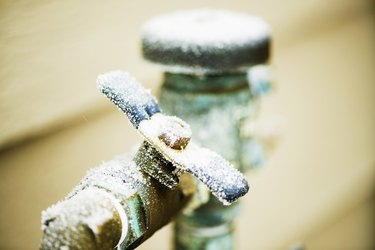Protecting Pipes from Freezing Issues: Critical Approaches
Protecting Pipes from Freezing Issues: Critical Approaches
Blog Article
What are your opinions regarding Prevent Frozen Pipes ?

Winter can wreak havoc on your pipes, particularly by freezing pipes. Here's just how to avoid it from happening and what to do if it does.
Introduction
As temperature levels decrease, the threat of icy pipes rises, potentially bring about expensive fixings and water damage. Comprehending just how to prevent icy pipes is crucial for house owners in cool climates.
Comprehending Icy Pipes
What triggers pipelines to freeze?
Pipes freeze when revealed to temperature levels listed below 32 ° F (0 ° C) for prolonged durations. As water inside the pipelines ices up, it broadens, putting pressure on the pipe wall surfaces and potentially creating them to burst.
Risks and damages
Frozen pipes can lead to water system disruptions, building damages, and expensive repair work. Burst pipelines can flooding homes and trigger comprehensive architectural damages.
Indications of Frozen Pipes
Recognizing frozen pipelines early can avoid them from bursting.
Just how to determine icy pipelines
Look for lowered water flow from taps, uncommon odors or sounds from pipes, and noticeable frost on exposed pipelines.
Prevention Tips
Protecting vulnerable pipes
Cover pipelines in insulation sleeves or use warm tape to protect them from freezing temperatures. Concentrate on pipelines in unheated or exterior areas of the home.
Home heating methods
Maintain indoor spaces effectively warmed, especially areas with plumbing. Open cupboard doors to enable warm air to distribute around pipes under sinks.
Securing Outside Pipes
Garden pipes and outside faucets
Detach and drain pipes yard tubes prior to winter season. Install frost-proof faucets or cover exterior faucets with protected caps.
What to Do If Your Pipelines Freeze
Immediate actions to take
If you think frozen pipes, maintain faucets available to ease pressure as the ice thaws. Utilize a hairdryer or towels soaked in warm water to thaw pipes slowly.
Long-Term Solutions
Architectural adjustments
Consider rerouting pipelines far from exterior wall surfaces or unheated areas. Include additional insulation to attic rooms, basements, and crawl spaces.
Updating insulation
Invest in high-grade insulation for pipes, attic rooms, and wall surfaces. Correct insulation helps preserve regular temperatures and minimizes the threat of frozen pipes.
Final thought
Protecting against icy pipelines requires proactive steps and fast feedbacks. By recognizing the causes, signs, and preventive measures, home owners can shield their pipes throughout winter.
5 Ways to Prevent Frozen Pipes
Drain Outdoor Faucets and Disconnect Hoses
First, close the shut-off valve that controls the flow of water in the pipe to your outdoor faucet. Then, head outside to disconnect and drain your hose and open the outdoor faucet to allow the water to completely drain out of the line. Turn off the faucet when done. Finally, head back to the shut-off valve and drain the remaining water inside the pipe into a bucket or container. Additionally, if you have a home irrigation system, you should consider hiring an expert to clear the system of water each year.
Insulate Pipes
One of the best and most cost-effective methods for preventing frozen water pipes is to wrap your pipes with insulation. This is especially important for areas in your home that aren’t exposed to heat, such as an attic. We suggest using foam sleeves, which can typically be found at your local hardware store.
Keep Heat Running at 65
Your pipes are located inside your walls, and the temperature there is much colder than the rest of the house. To prevent your pipes from freezing, The Insurance Information Institute suggests that you keep your home heated to at least 65 degrees, even when traveling. You may want to invest in smart devices that can keep an eye on the temperature in your home while you’re away.
Leave Water Dripping
Moving water — even a small trickle — can prevent ice from forming inside your pipes. When freezing temps are imminent, start a drip of water from all faucets that serve exposed pipes. Leaving a few faucets running will also help relieve pressure inside the pipes and help prevent a rupture if the water inside freezes.
Open Cupboard Doors
Warm your kitchen and bathroom pipes by opening cupboards and vanities. You should also leave your interior doors ajar to help warm air circulate evenly throughout your home.

Hopefully you liked our section on 6 Ways to Prevent Frozen Pipes. Thanks a ton for taking time to read through our short article. Feel free to take the time to distribute this write-up if you appreciated it. We truly appreciate your readership.
About Report this page